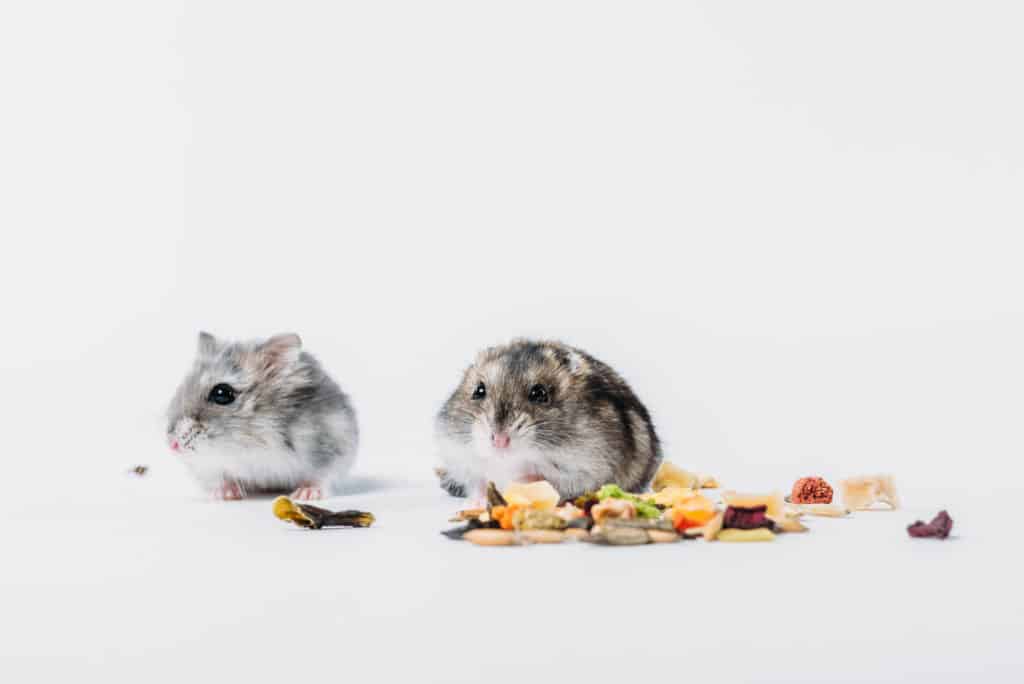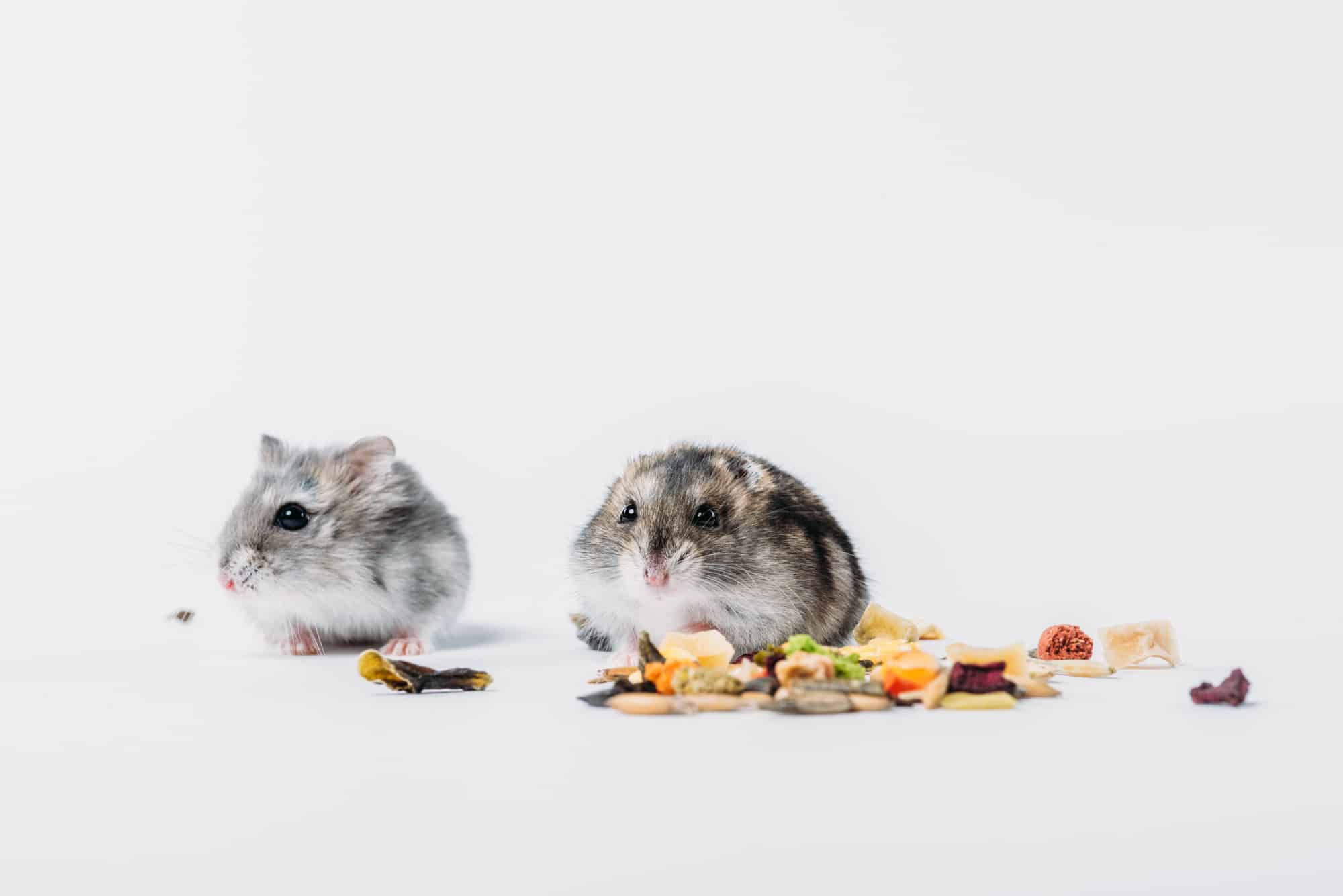Commercially available hamster pellets contain the necessary nutrients that a hamster’s body needs. But that doesn’t mean you should give your hamster only these pellets. You should try to make your hamster’s diet as balanced as possible by occasionally adding healthy snacks or treats. Moreover, these hamster snacks can strengthen the bond between you and your hamster.
But if you don’t know which snacks to give your hamster and are wondering which hamster snacks are healthy and which are not, you don’t have to search any further. In this article, you will find a list of all the snacks and treats that are healthy as well as tasty, which your hamster will come to love. So keep reading.
- Should you give your hamster treats or snacks?
- What hamster snacks are safe? What treats can hamsters eat?
- How often should you give your hamster treats?
- How often can you give your hamster fruits?
- Should you give different treats to the different species of hamsters?
- What hamster snacks are unsafe? What treats should you never give your hamster?
- Summary
Should you give your hamster treats or snacks?
If commercially available hamster pellets are enough to satisfy the nutritional demands of a hamster’s body, why should you give your hamster treats?
Well… Treats can be tastier and can help tame your hamster. A treat can be a reward for a job well done. So, if your hamster depicts a behavior that you want to encourage, you can give him a treat every time he shows that behavior. That way, he knows that his behavior will be rewarded and is more likely to repeat it.
Since treats are tasty, they can also help you develop a strong bond with your hamster. If you have a young hamster, then by using treats, you can make him get closer to you and feel comfortable around you. Of course, it takes time. First, you have to keep the treat near his hideout, then near the cage bars. Then you can keep the treats in your hand and keep your hand inside the cage. When your hamster takes the treat from your hand, it means he is comfortable around you. A few days after that happens, you can lift him up and hold him in your hands. If you give treats to your hamster, he will associate you with good things and is more likely to get closer to you.
Eating only hamster pellets can become boring and monotonous for your hamster. If that happens, your hamster will start getting bored and irritated. But treats can prevent that from happening by adding variety to the diet and breaking the monotony of eating only hamster pellets.
Moreover, treats can also help create a balanced diet that simulates the diet a hamster will eat in the wild. So, giving treats to your hamster is highly recommended, even though treats shouldn’t make up more than 10% of your hamster’s diet.
What hamster snacks are safe? What treats can hamsters eat?
Hamsters are omnivores. So, they can eat a variety of treats that are both delicious and healthy for them. But you should remember to introduce any treat only slowly into your hamster’s diet. After all, any sudden changes to a hamster’s diet can lead to stress and/or diarrhea and Wet Tail. So, make sure that you include treats only slowly and one by one into your hamster’s diet. But that being said, which treats are safe for hamsters to eat? The below list can help you out if you don’t know the answer.
Fruits
Fruits are healthy as well as delicious. They contain vital vitamins and minerals that a hamster’s body needs. But many fruits are also rich in sugar and/or water. Too much sugar can make your hamster obese and diabetic, and too much water can cause diarrhea. So, do not give too much fruits to your hamster in one sitting. Also, do not give more than one fruit in one meal because the sugar content in different fruits can quickly add up. Moreover, since fruits can spoil easily, you should remove any uneaten pieces of fruits within 12 hours.
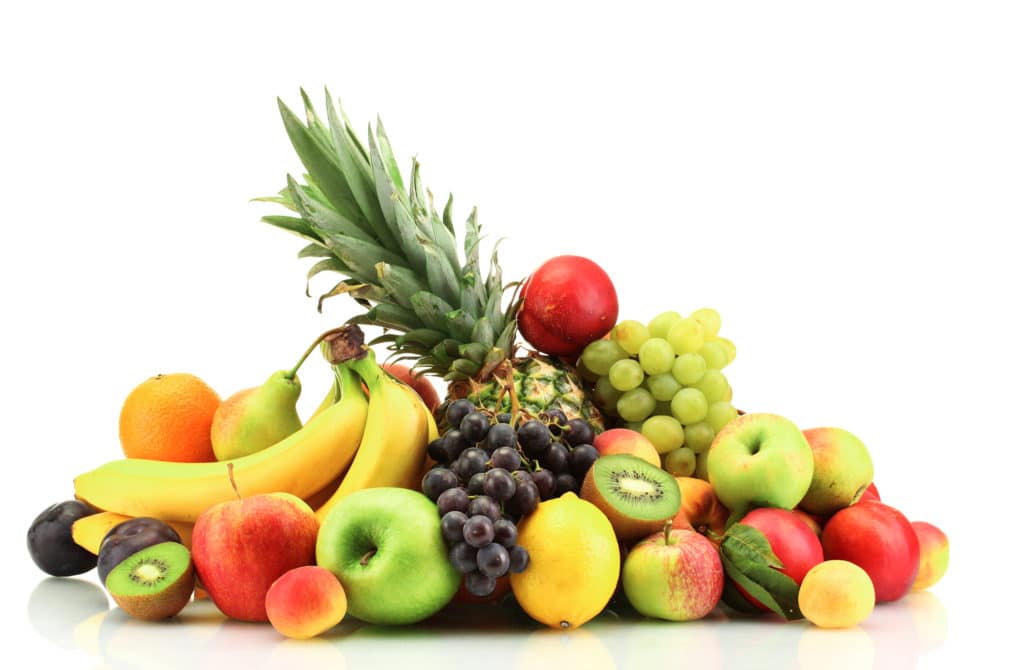
The best fruits for hamsters are apples, bananas, blueberries, strawberries, pears, and grapes. But not all types of hamsters can eat all fruits. For example, dwarf hamsters are more prone to diabetes, and hence, fruits should be given only very sparingly.
While serving fruits to hamsters, it is necessary to take the following steps:
1. Buy organic fruits. They will most likely be unwaxed and won’t contain any pesticides.
2. If you cannot buy organic fruits, wash the fruits with warm water so wash off the wax and pesticides.
3. Remove parts of the fruit that could be poisonous, like seeds (E.g., Apple seeds, pear seeds, etc. ), leaves, etc.
4. Serve fruits only in moderation and only as occasional treats.
Vegetables
Vegetables are one of the best treats for hamsters. They are healthy as well as safe, especially for dwarf hamsters since they cannot eat too much fruits.
Green leafy vegetables, spinach leaves, and lettuce are the best vegetables to give your hamster. Other healthy vegetables to give your hamster are asparagus, beans, broccoli, cauliflower, celery, cucumber, kale, legumes, sweet potatoes, etc. (Source: Animals. mom). But before you give vegetables to your hamster, follow the same steps mentioned in the ‘Fruits’ section of this blog post.
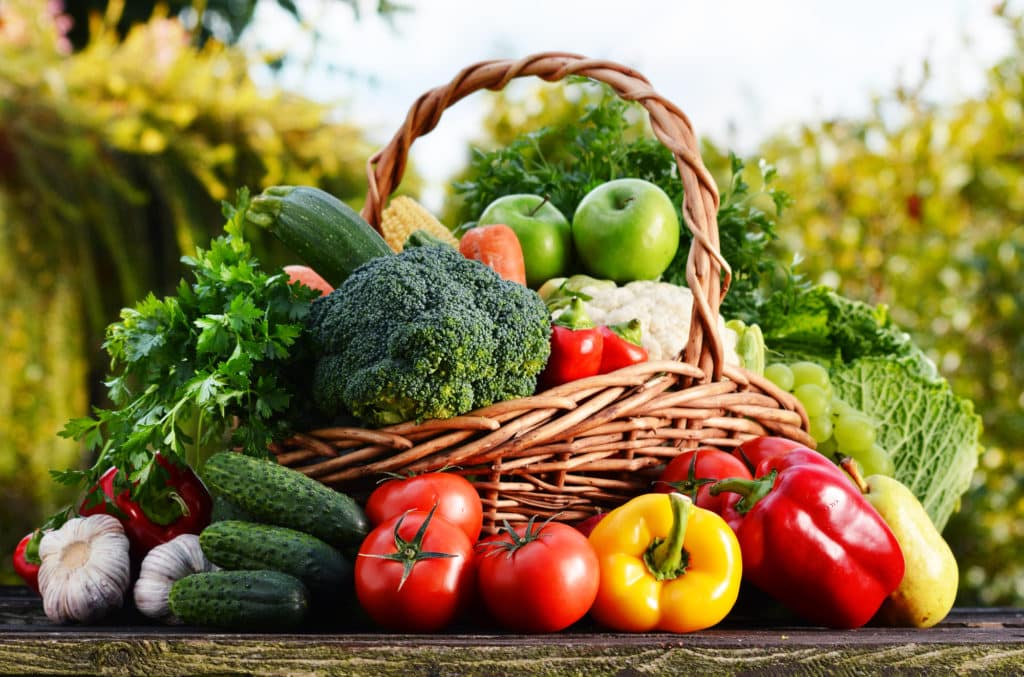
Grains
Grains are important in a hamster’s diet because they are a rich source of proteins and dietary fiber. The best grains to offer your hamster are whole grain cereals, brown rice, whole wheat bread, unsalted and unflavored popcorn, and whole wheat pasta (Source: Pet co).
Nuts & Seeds
Nuts and seeds are an integral part of a hamster’s diet in the wild. They are a rich source of proteins, vitamins, minerals, and healthy fats. So, you can include nuts and seeds in your hamster’s diet, albeit sparingly, because the fat content can make your hamster obese and cause a string of problems if overfed.
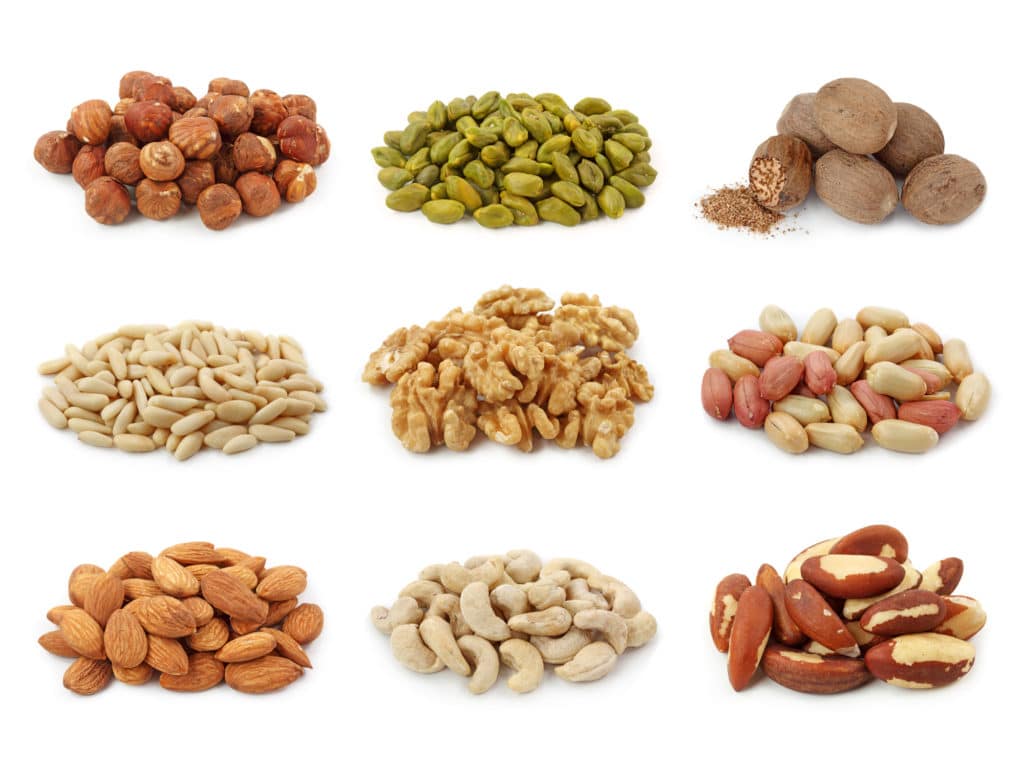
Some of the nuts hamsters can eat are almonds, Brazil nuts, cashew, hazel nuts, walnuts, and pistachio (Source: Arcana pets). Some of these nuts can even be given with shells on. After all, the shells of nuts can help wear down the teeth of your hamster. Just make sure that the shells are not too hard to crack. Almond is a nut whose shell you have to remove before giving it to your hamster. Bitter almonds can be poisonous to our hamsters. So, feed only almonds that aren’t bitter. The outer skin of the almonds can cause digestive problems for your hamster. So, you should remove the outer skin of the almonds. To do this, you have to first boil them in hot water and let them cool down before peeling the outer skin off.
Some of the seeds hamsters can eat are pumpkin seeds, sunflower seeds, chia seeds, (cooked) quinoa seeds, barley, oat, millet, etc.
Insects
Insects are part of a hamster’s diet in the wild. So, you can serve your hamster insects. Some of the insects that you can feed your hamster are crickets, locusts, mealworms, and waxworms. You can get both live and dried insects from pet stores and online sellers. But wherever you decide to buy the insects from, make sure that the seller has a good reputation. In addition to that, decide how you want to buy the insects – Dried or Alive? Making this decision is also very important.
For example, if you buy live mealworms, you have to finish them before the insects turn into pupa or beetles, i.e., within a span of 8 to 10 weeks. So, buying live insects is better if you own multiple hamsters. If you own only one hamster, even though live insects can help awaken the hunting instinct of your hamster, it is better to go for dried insects.
Egg
Eggs are a great source of protein. So, eggs are highly beneficial for the health of your hamster. Especially for pregnant hamsters, which need a lot of energy to give birth to healthy pups, and new mother hamsters, which need a lot of energy to recover their health after giving birth, an egg is a much-needed food item. But before you get excited and give eggs to your hamster, you should first know how to give eggs to your hamster.
Raw eggs can contain bacteria like salmonella, E.coli, etc., which can be harmful to hamsters. So, you have to cook the egg properly before giving it to your hamster. Avoid salt, butter, oil, and any seasoning while cooking eggs for your hamster. Hard-boiled eggs and scrambled eggs are great for hamsters. Avoid fried eggs since the added salt, butter, oil, etc., can affect the health of your hamster.
Egg whites are best for hamsters. Avoid egg yolk if possible since they contain a lot of fat. You should also avoid eggshells since they contain calcium carbonate, which can cause kidney stones or lead to kidney failure.
Meat
Just like eggs, meat is also a great source of protein for your hamster. But not all meat is good for our hamsters. For example, light-colored meat like chicken and fish can be digested much easier than red meat. So, if you plan to give meat to your hamster, it should be something (chicken, turkey, fish, shrimp, etc.) that is easy to digest. Moreover, just like eggs, meat can also contain harmful bacteria. So, meat should be properly cooked. If not, it can cause digestive problems.
Moreover, you should not use any ingredients like salt, oil, butter, pepper, or chili while cooking the meat for your hamster. Baking and boiling are the only methods suitable for cooking the meat for your hamster (Source: Petkeen).
Hay
Hay is a great source of fiber and other nutrients. But unlike rabbits and guinea pigs, hamsters don’t necessarily need hay to stay healthy.
But you can give your hamster hay as a healthy treat. However, not all hamsters might like the taste of hay. Some might like the taste and decide to keep eating it; while some might just chew on it to wear their teeth down; some might even decide to use it as bedding and take it back to their nest; whereas some might hate its taste and never look at it again.
So, when it comes to hay, you can try giving it to your hamster. If your hamster likes it, you can continue giving it to your hamster. If not, stop giving it to your hamster again.
How often should you give your hamster treats?
Treats should be given only in moderation to hamsters. Treats should never make up more than 10% of a hamster’s diet. Moreover, they should not be given too often. Once in two to three days is the right frequency to give treats.
How often can you give your hamster fruits?
Fruits can contain a lot of sugar and/or water. So, you shouldn’t give your hamster fruits too often. Once in two or three days is the right frequency to give fruits to your hamster.
Should you give different treats to the different species of hamsters?
There are 5 different species of pet hamsters – Syrian hamster, Roborovski hamster, Campbell hamster, Chinese hamster, and Winter White hamster. The Syrian hamster is the biggest species of pet hamsters. Other pet hamster species are pretty small when compared to the Syrian hamster and are called dwarf hamsters.
Since Syrian hamsters are bigger than other pet hamsters, their digestive systems can handle more sugar and acidic content than dwarf hamsters. So, the quantity of treats they can eat is higher than dwarf hamsters. Moreover, fruits are safe and healthy for Syrian hamsters but should mostly be avoided for dwarf hamsters due to the amount of sugar, acid, and water content in them. But other treats can be given to both Syrian and dwarf hamsters, even though the quantity should be less for dwarf hamsters when compared to Syrian hamsters.
But if you are not sure whether your hamster can handle a treat, consult a vet before giving it to your hamster.
What hamster snacks are unsafe? What treats should you never give your hamster?
Most of the fresh fruits and vegetables that you eat are safe and healthy for your hamster if fed in the right amounts and frequency. But there are some naturally occurring food items that are dangerous for your hamster. Some of them are listed below:
| Food item | Reason to avoid | |
| 1 | Apple Seeds | Contain a poisonous substance called hydrogen cyanide that can kill your hamster. |
| 2 | Bitter almonds | Contain hydrogen cyanide. |
| 3 | Citrus fruits and vegetables | Too acidic and can hence upset your hamster’s stomach or cause diarrhea. |
| 4 | Garlic | Highly acidic and contains a lot of calcium and phosphorous. |
| 5 | Onions | Contain toxic chemical compounds called sulfoxides. |
| 6 | Raw beans | Contain lectin, which can poison hamsters or cause digestive and gastrointestinal issues. |
| 7 | Raw potatoes | Contain a toxic chemical called solanine that is poisonous even for humans. |
| 8 | Rhubarb leaves | Contain oxalic acid that can cause vomiting, diarrhea, etc. |
| 9 | Chocolate | Contain caffeine that can affect the nervous system of your hamster and theobromine that can cause obesity. |
| 10 | Sugary foods | Can cause diabetes and obesity. |
| 11 | Salty foods | Can increase blood pressure. |
| 12 | Junk foods | Generally unhealthy. |
Summary
In this blog post, we have listed some examples of healthy hamster treats. We hope it helped you find out which food items are safe for your hamsters and which aren’t. Are there any food items we missed? If so, please share them with us in the comments below.
